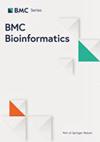scBubbletree:单细胞 RNA-seq 数据可视化计算方法
IF 2.9
3区 生物学
Q2 BIOCHEMICAL RESEARCH METHODS
引用次数: 0
摘要
可视化方法将单细胞 RNA 测序(scRNA-seq)实验的高维数据转化为二维图,用于分析细胞关系,并作为报告生物学见解的一种手段。然而,许多标准方法生成的视觉效果存在过度绘制、缺乏定量信息以及相对于原始高维空间的生物模式的全局和局部属性失真等问题。我们介绍的 scBubbletree 是一种新的、可扩展的 scRNA-seq 数据可视化方法。scBubbletree 将气泡树与进一步的群集相关信息堆叠在一起,以一种易于访问的视觉方式,从而促进了 scRNA-seq 数据的定量评估和生物学解释。我们用大型 scRNA-seq 数据集(包括一个拥有 120 多万个细胞的数据集)演示了这一点。为了促进 scRNA-seq 数据的连贯量化和可视化,我们开发了 R 软件包 scBubbletree,作为 Bioconductor 存储库的一部分免费提供,网址是:https://bioconductor.org/packages/scBubbletree/。本文章由计算机程序翻译,如有差异,请以英文原文为准。
scBubbletree: computational approach for visualization of single cell RNA-seq data
Visualization approaches transform high-dimensional data from single cell RNA sequencing (scRNA-seq) experiments into two-dimensional plots that are used for analysis of cell relationships, and as a means of reporting biological insights. Yet, many standard approaches generate visuals that suffer from overplotting, lack of quantitative information, and distort global and local properties of biological patterns relative to the original high-dimensional space. We present scBubbletree, a new, scalable method for visualization of scRNA-seq data. The method identifies clusters of cells of similar transcriptomes and visualizes such clusters as “bubbles” at the tips of dendrograms (bubble trees), corresponding to quantitative summaries of cluster properties and relationships. scBubbletree stacks bubble trees with further cluster-associated information in a visually easily accessible way, thus facilitating quantitative assessment and biological interpretation of scRNA-seq data. We demonstrate this with large scRNA-seq data sets, including one with over 1.2 million cells. To facilitate coherent quantification and visualization of scRNA-seq data we developed the R-package scBubbletree, which is freely available as part of the Bioconductor repository at: https://bioconductor.org/packages/scBubbletree/
求助全文
通过发布文献求助,成功后即可免费获取论文全文。
去求助
来源期刊

BMC Bioinformatics
生物-生化研究方法
CiteScore
5.70
自引率
3.30%
发文量
506
审稿时长
4.3 months
期刊介绍:
BMC Bioinformatics is an open access, peer-reviewed journal that considers articles on all aspects of the development, testing and novel application of computational and statistical methods for the modeling and analysis of all kinds of biological data, as well as other areas of computational biology.
BMC Bioinformatics is part of the BMC series which publishes subject-specific journals focused on the needs of individual research communities across all areas of biology and medicine. We offer an efficient, fair and friendly peer review service, and are committed to publishing all sound science, provided that there is some advance in knowledge presented by the work.
 求助内容:
求助内容: 应助结果提醒方式:
应助结果提醒方式:


